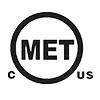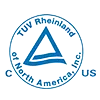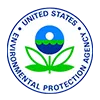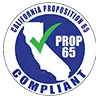Whether commuting to work or embarking on a road trip, we encounter traffic signs everywhere we drive. These familiar signs with shapes, symbols, and written warnings are crucial guides that keep all road users safe. But how exactly do ubiquitous traffic signs protect us and save lives on the road?
In this in-depth article, we’ll explore the many safety benefits provided by traffic signs. We’ll also offer driving tips for leveraging traffic signs to their fullest potential. Keep reading to understand how these overlooked signs are integral for preventing accidents and fatalities whenever you hit the streets.
Regulatory Signs Enforce Safe Actions
The first category of traffic signs is regulatory signs. These black and white signs give legally binding traffic directions that must be obeyed. By mandating safer driving actions, they aim to eliminate hazardous behaviors that can lead to crashes. For example:
Stop signs require motorists come to a complete stop and check for pedestrians before proceeding through an intersection. This prevents dangerous rolling stops and reduces deadly T-bone crashes.
Speed limit signs enforce maximum speeds that are safe for that particular roadway. This curbs speeding which is involved in over a quarter of fatal crashes.
Do not enter signs prohibit drivers from entering ramps, highways, or one way streets in the wrong direction. This helps avoid devastating head-on collisions.
One way signs direct travel along less congested routes in busy areas. This reduces congestion and complex vehicle interactions at intersections that can lead to accidents.
By legally requiring prudent actions, regulatory signs create disciplined, careful driving. Failing to obey them can result in fines, penalties, and license suspension.
Warning Signs Alert of Hazards Ahead
Another vital category is yellow and black warning signs. These signs caution drivers about upcoming road conditions, obstacles, and dangers so they can adjust speed and driving to avoid crashes. For example:
Merging signs tell drivers that lanes are converging ahead and smooth merging will be required. This allows safe lane changing and blending with traffic.
Pedestrian crossing signs instruct drivers to watch for people crossing and prepare to stop. This prevents drivers from striking pedestrians in crosswalks.
Railroad crossing signs prompt drivers to look, listen and slow down for approaching trains to avoid tragic collisions.
School zone signs with reduced speed limits protect children near schools.
Low clearance signs help prevent bridge strikes by warning of height restricted areas.
By identifying risks ahead of time, warning signs give motorists precious extra moments to react cautiously. This improves safety outcomes.
Guide Signs Provide Clear Direction
Green, brown and blue guide signs also boost safety by offering destination, distance, route number, and direction details. This helps drivers successfully navigate to their intended location. Specifically, guide signs:
Prevent drivers from getting lost, frustrated, and distracted looking at phones for directions. This allows drivers to keep their eyes on the road.
Ensure drivers are in proper lanes ahead of time to make correct upcoming turns or freeway exits. This avoids sudden, reckless lane changes at the last second.
Provide advance notice of upcoming exits or turns so drivers can safely merge into appropriate lanes in time.
Notify drivers of approaching rest stops, gas stations, hospitals, and other essential services where they can safely pull over if needed.
Improve navigation through complex intersections and interchanges. This reduces stopping or backing up which can obstruct flow and cause rear end collisions.
By keeping roadway travel easy to understand, guide signs allow smooth, safe point-to-point journeys.
Traffic Signals Organize Complex Intersections
Traffic light signals are essential for managing heavy traffic flow safely through busy intersections. By organizing alternating right-of-way, they prevent chaotic, dangerous situations. Specifically, traffic signals:
Alternate which lanes of traffic can proceed to avoid collision from vehicles crossing paths in an intersection. This tremendously reduces dangerous T-bone crashes.
Provide clear stop or proceed indications to drivers. This prevents uncertainty that causes running red lights or slamming on brakes.
Give each lane a turn to go in sequence, preventing vehicles from turning simultaneously into each other's paths.
Create safe breaks in traffic flow for pedestrians to cross streets.
Reduce congestion on main arteries by metering side street entry through reds. This prevents gridlock which can lead to driver frustration and reckless maneuvers.
By coordinating movement, traffic lights maintain order and safety even in the busiest driving environments.
Lane Use Signs Guide Safer Positioning
Lane use signs like left turn only, right lane exit only, or through traffic lane only encourage proper lane discipline for safer roadway positioning. This helps avoid sideswipe, rear-end, and merging collisions. Specifically, lane use signs:
Prevent incorrect lane use like traveling slowly in the left lane which obstructs flow and causes accidents.
Stop drivers from making last minute lane changes if they are in the wrong lane for their planned route.
Indicate which lanes offer through travel versus mandatory turn lanes well in advance. This smoothes traffic flow.
Alert drivers to move into appropriate lanes ahead of time to access their connector, exit, or turn.
By guiding smarter lane positioning, these ubiquitous signs create more orderly roadway travel.
Tips for Leveraging Traffic Signs
To truly maximize safety from traffic signs, drivers should:
Strictly obey all regulatory signs as legally required. Never roll through stops or speed.
Slow down and increase alertness near warning signs. Be ready to react.
Look ahead to spot signs early so you have more time to respond properly.
Give full attention to reading and comprehending sign messages.
Make sure you are in the correct lane well in advance of any junctions or turns.
Wait until you have the green light and room to fully clear an intersection before proceeding through.
Follow any posted reduced speed limits near construction, school zones, or residential areas.
Using traffic signs properly as an informed driver is key for keeping yourself and all road users safe!
Conclusion
Traffic signs are invaluable, ubiquitous tools for keeping roads safe by regulating driving, warning of hazards, routing direction, and organizing flow. They prompt drivers to take actions and make decisions that prevent accidents and save lives every day. Next time you get behind the wheel, leverage these signs to their full potential by paying attention and heeding their guidance. When we collectively follow traffic signs, we create safer journeys for everyone.














